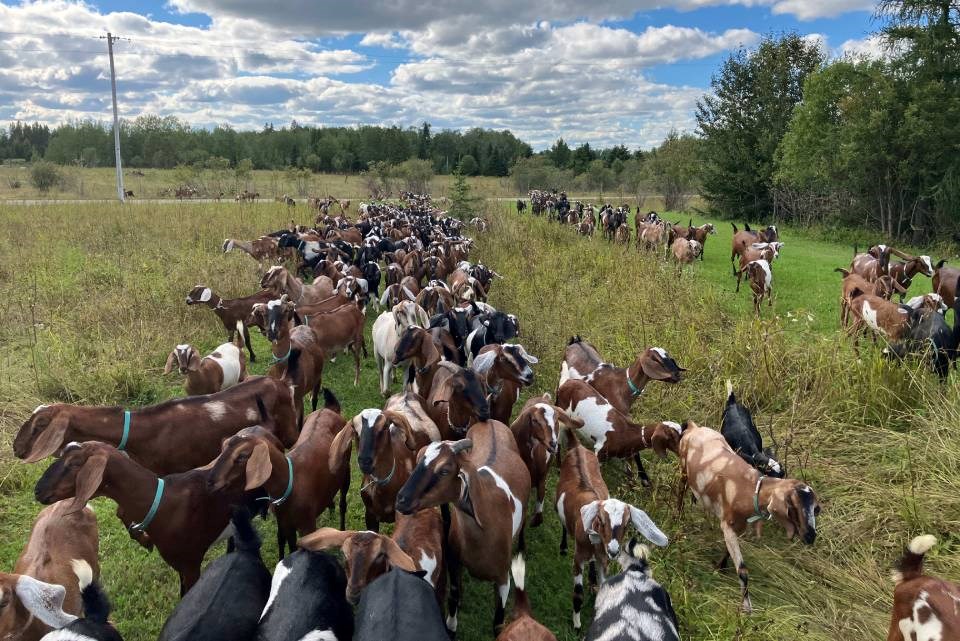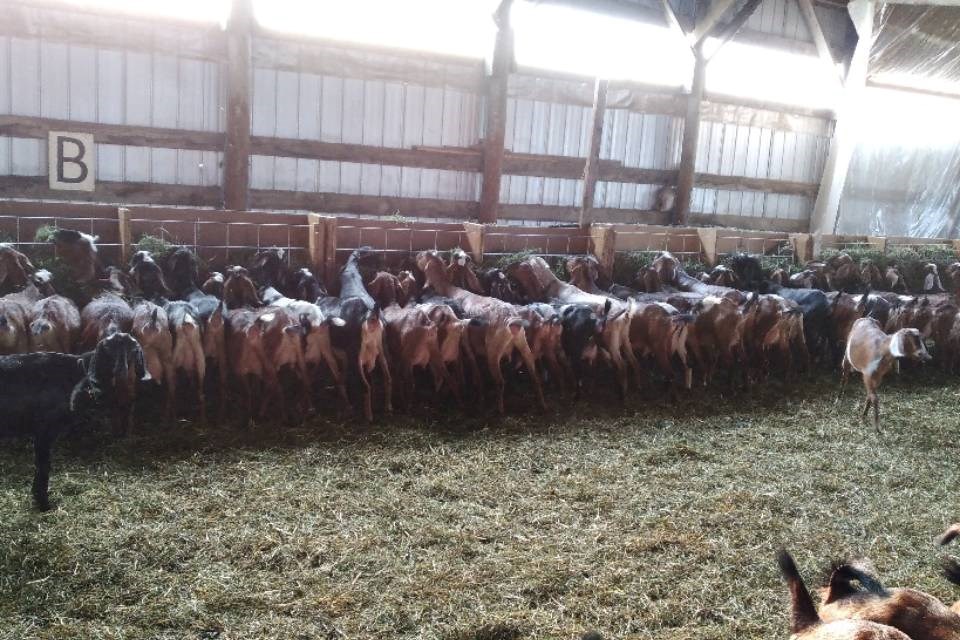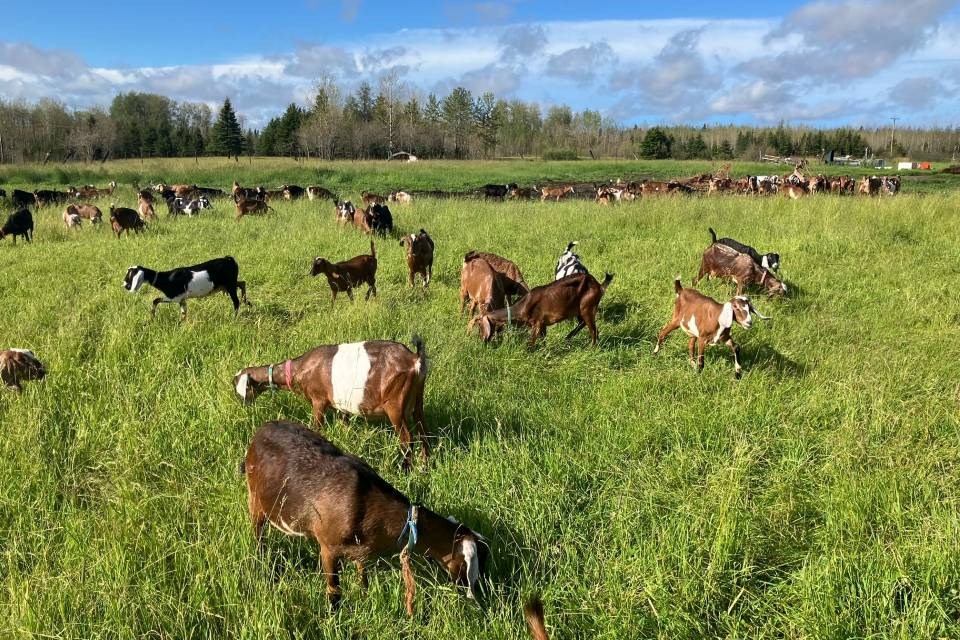Though their herd started out with only three Nubian does 12 years ago, Greg and Cheryl Garner’s picturesque 50-acre farm in Porquis Junction quickly expanded to include nearly 800 goats, with a projected production capacity of 60,000 litres of milk per year.
Currently, Nubians North is the only commercial goat milk farm in Northern Ontario licensed to both produce and transport milk.
The choice of the long-eared Nubian breed wasn’t a random one. Nubian goats, Greg said, have unique characteristics that make them very desirable for cheese production.
“I’d had goat milk before and it didn’t taste good to me," said Garner from his Highway 11 farm situated south of Iroquois Falls.
"(Nubian goats) don’t impart a 'goaty' flavour into the milk or meat, so the product is good for most people who shy away from goat products.”
The milk, high in butterfat and protein, may also be more digestible for people suffering from lactose intolerance. Goats only produce the A2 milk protein, which is more digestible for humans than the A1 protein produced by most cows.

The superior quality and taste of Nubians North’s dairy has made them one of the main providers of milk for the artisanal cheese producer Fromagerie Kapuskoise, which uses milk from Northern Ontario producers to create delicious, high-quality products at its Kapuskasing plant.
Fromagerie Kapuskoise processes the milk into about five different varieties of cheeses, such as the Kapuskasing Chèvre, described by cheesemaker François Nadeau as having a creamy, tangy flavour. The cheese melts very well in hot sandwiches, fondues, and pizzas, and is aged between two and six months.
The Mattagami goat cheese, aged for three to six months, is suggested as a replacement for cheddar, and can be used on lasagnes or salads.
Nadeau said the seasonal Pagwa, similar to Brie, can be used to stuff apricots drizzled with honey and topped with fresh basil and almonds — a favourite Fromagerie Kapuskoise recipe.
And the spreadable Fresh Chèvre cheese can be paired with crackers and jams or jellies, and also makes fantastic cheesecakes or mousses.
On his YouTube channel, which features many recipes, Greg suggested pairing Fresh Chèvre with smoked salmon and non-genetically modified (GMO) crackers. But if you happen to run out of these pairings, Greg said plain Doritos serve as a fantastic alternative.
Though they had never worked with goats before, the Garners both grew up on high-production dairy farms, and have experience showing and selling cattle. Both are also graduates of agricultural programs from the University of Guelph’s Ridgetown Campus.
“I like to say we’re bona fide farmers,” Greg laughed.
The Garners manage to run the entire operation themselves, with the addition of minimal seasonal help. Greg focuses on caring for the larger herd, including shepherding during turnout, while Cheryl takes care of the kids and monitors herd health.
Greg believes the quality of his product depends on ensuring a good quality of life and excellent standard of feed for his goats. For example, Greg said it’s uncommon for the animals to have regular access to turnout in pastures.
Greg insists on turnout even though goats are notoriously difficult to keep behind fences. However, the goats typically rush back when called — as can be seen on the Nubians North YouTube channel.
“One of the most rewarding things to see is them outside and being goats,” Greg said.
Greg Garner shares his goat-herding adventures on his YouTube channel:
There are many videos online featuring Greg enjoying his time shepherding with his border collie, who is currently in training.
“He’s not a bona fide sheepdog but he’s a protective dog,” Greg said. “He knows if there are wolves or coyotes nearby.”
Greg also avoids feeding GMO-modified grain or hay from plastic wrapped bales because it ferments and this changes the nutritional value. When the feed quality is subpar, the milk production and quality is immediately affected. Poor nutrition can affect the cheese as it ages, causing wheels to crack.
“I’ve been in facilities where the goats aren’t fed on hay, they’re just given grain," he said.
"That’s not a good quality of life. That’s why we want to deal with the food ourselves, from farm to fork.”
The Garners have no plans to expand their herd so it numbers in the thousands, like some of the larger southern farms. The point of their small-scale operation is to place animal welfare at the forefront and provide an ethical alternative to factory farming for animals and customers alike.
Instead, they hope to make goat cheese a larger niche market at quality sellers down south.
“We’ve seen the food industry make niche markets for organic foods, and the market makes changes.”
Greg also dreams of one day having his own processing plant for products that don’t require aging, like bottled milk and yogurt. And he hopes to make goat meat a more common staple of the Canadian diet.

The Garners have recently launched an online store selling meat, using their own packaging and labelling. They hope to promote it with more throughout this coming winter.
“We are planning to target restaurants, and we have the cheese moving into some of those markets down south as well.”
In order to increase awareness about their nutritious and delicious products to a larger market of buyers, they’ve recently attempted to expand their social media and online presence.
The Garners are confident that, if people see how they manage their animals, customers will show appreciation and support by buying their products.
They also hope to use their social media to promote small-scale farming to the next generation of farmers.
“I have a pie-in-the-sky or grandiose dream,” Greg said, “that if we start to get some traction, then we have a model that we can provide other young farmers that want to get into dairy operation.”




